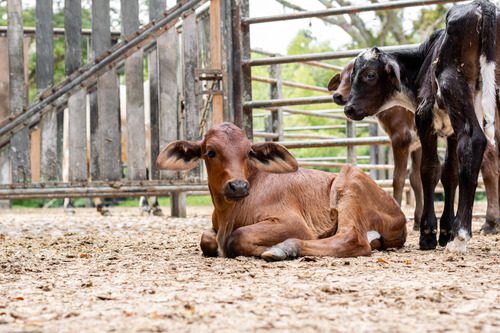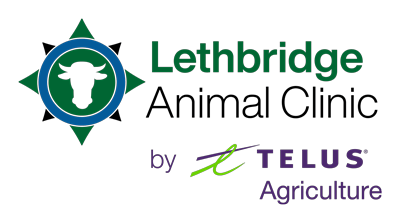Causes of Lameness in Cattle
Lameness in cattle is a significant concern for livestock owners, impacting the overall health, productivity, and well-being of the herd. Understanding the various causes of lameness in cattle is essential for early identification and effective management. This blog aims to provide a comprehensive overview of the common causes of lameness in cattle and offer insights into preventive measures. For more information or assistance, please call Lethbridge Animal Clinic at (403) 327-4150.

Common Causes of Lameness in Cattle
Lameness in cattle can result from various factors, including infectious diseases, nutritional deficiencies, environmental conditions, and physical injuries. Each of these causes can lead to significant discomfort and decreased mobility in affected animals.
Infectious Diseases
Infectious diseases are a leading cause of lameness in cattle. These diseases can spread rapidly within a herd, making early detection and management crucial.
- Foot Rot: Foot rot is a common bacterial infection that affects the soft tissues between the toes. It causes severe inflammation, leading to swelling and lameness. The bacteria thrive in wet and muddy conditions, making proper hygiene essential in preventing this condition.
- Digital Dermatitis: Also known as hairy heel warts, digital dermatitis is a contagious disease caused by spirochete bacteria. It leads to painful lesions on the feet, primarily affecting dairy cattle. Maintaining clean and dry living conditions can help reduce the risk of digital dermatitis.
- Bovine Viral Diarrhea (BVD): BVD is a viral infection that can cause lameness as a secondary symptom. It weakens the immune system, making cattle more susceptible to other infections that can result in lameness.
Nutritional Deficiencies
Proper nutrition plays a critical role in maintaining the health and mobility of cattle. Nutritional deficiencies can lead to various health issues, including lameness.
- Mineral Deficiencies: Deficiencies in essential minerals such as zinc, copper, and selenium can weaken the structural integrity of hooves, making them more prone to cracks and infections. Providing balanced mineral supplements can help prevent these issues.
- Vitamin Deficiencies: Vitamins such as A and D are vital for bone health. A lack of these vitamins can lead to weakened bones and joints, increasing the risk of lameness. Ensuring a well-rounded diet that includes necessary vitamins is crucial for cattle health.
Environmental Conditions
The living environment of cattle significantly influences their overall health and susceptibility to lameness. Poor environmental conditions can lead to various health problems, including lameness.
- Wet and Muddy Conditions: Constant exposure to wet and muddy environments can soften hooves, making them more susceptible to infections like foot rot. Providing dry and clean living spaces is essential in preventing such conditions.
- Rough and Uneven Terrain: Cattle grazing on rough or uneven terrain are at a higher risk of physical injuries that can cause lameness. Ensuring that pastures are well-maintained and free of sharp objects can help reduce this risk.
Physical Injuries
Physical injuries are a direct cause of lameness in cattle. These injuries can occur due to various reasons, including improper handling, accidents, or fights among animals.
- Hoof Injuries: Hoof injuries such as cracks, bruises, or punctures can lead to significant pain and lameness. Regular hoof trimming and inspection can help identify and address these issues early.
- Joint Injuries: Injuries to the joints, such as sprains or fractures, can result from falls or collisions. Providing a safe and well-monitored environment can help prevent such injuries.
- Muscle Injuries: Muscle strains or tears can occur due to overexertion or sudden movements. Ensuring that cattle have adequate rest and are not subjected to unnecessary stress can help prevent muscle injuries.
Preventive Measures for Lameness in Cattle
Preventing lameness in cattle involves a combination of proper management practices, regular health monitoring, and timely intervention. Implementing these measures can significantly reduce the incidence of lameness and promote the overall well-being of the herd.
Proper Hygiene and Housing
Maintaining a clean and dry living environment is essential in preventing infections that cause lameness. Regularly cleaning and disinfecting housing areas can reduce the risk of bacterial and fungal infections. Ensuring adequate drainage in pastures and housing areas can also help keep hooves dry and healthy.
Balanced Nutrition
Providing a balanced diet that includes essential minerals and vitamins is crucial for the overall health of cattle. Regularly consulting with a veterinarian or a nutritionist can help ensure that the dietary needs of the herd are met. Supplementing the diet with necessary minerals and vitamins can prevent deficiencies that lead to lameness.
Regular Health Monitoring
Regular health monitoring and early detection of issues are key in preventing lameness. Conducting routine hoof inspections and trimming can help identify and address problems before they escalate. Implementing a vaccination program can also protect cattle from infectious diseases that cause lameness.
Safe Handling and Housing
Proper handling techniques and safe housing conditions can prevent physical injuries that cause lameness. Training staff on appropriate handling methods and ensuring that housing areas are free of hazards can reduce the risk of injuries. Providing adequate space and soft bedding can also help prevent joint and muscle injuries.
Promoting Herd Health and Productivity
Lameness in cattle is a multifaceted issue that requires a comprehensive approach to manage effectively. By understanding the common causes of lameness and implementing preventive measures, livestock owners can significantly improve the health and productivity of their herds. Lameness in cattle also has economic implications for livestock operations. Early detection, proper management, and preventive measures are essential in reducing the incidence of lameness and promoting a healthy, productive herd. For more information or assistance with managing lameness in cattle, please contact Lethbridge Animal Clinic at (403) 327-4150.
